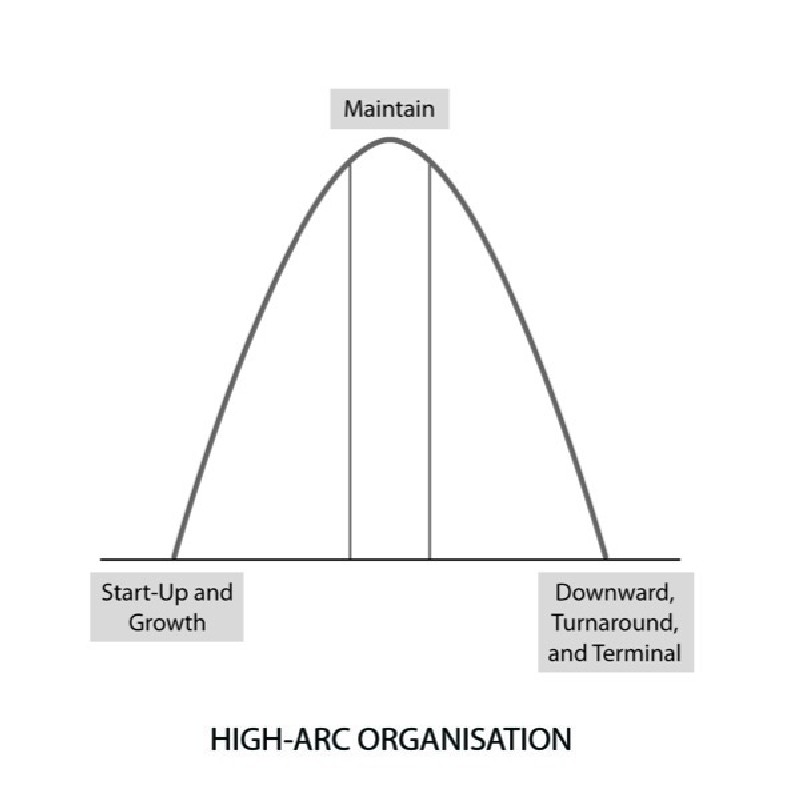In my work with not-for-profits (NFPs), I have noticed a pattern among many organisations – those with rapid growth trajectories (significant expansion of programs and sites, the number of people they serve, operating budget and so on) often experience a rapid decline. I came to think of this as ‘high-arc’.
By contrast, ‘low-arc’ organisations (ones more cautious or deliberate in their growth trajectories) tend to decline gradually over a greater period of time. I started to believe that rate of growth can predict a NFP’s future, depending on the level of investment and attention it gives to lifecycle development.
The sector is rife with examples of organisations that have grown for growth’s sake, perhaps convinced that if they don’t grow they will fail. Or perhaps an organisation’s leaders have been more opportunistic than strategic in seizing growth opportunities. It is quite common, for example, for a NFP to pursue funding opportunities that do not align well with its mission or specific goals.
There is no single appropriate rate of growth for a NFP. If an organisation is too cautious it may miss important opportunities for funding or collaborative partnerships. If a NFP is growing in a reckless or unstructured way, or growing beyond its capacity, growth will most likely be unsustainable. These challenges apply to both programmatic growth and organisational growth. For example, I once worked with a small advocacy organisation that received a sizeable grant for infrastructure to support its programs. Enhancements included IT upgrades, a bigger office space and additional staff to focus on development and external communications, and all of these changes were made over a short period of time. Program staff resented the significant infusion of funds into administration, and over time it became clear that the organisation lacked the management capacity to integrate these enhancements effectively and to sustain them. This started a spiral of internal discord that resulted in nearly all staff leaving the organisation. The organisation never regained its footing and after two very difficult years it closed its doors.
Was the high rate of growth this organisation’s fundamental problem? Probably not. But the overly rapid and ultimately misguided growth did put pressures on the organisation that it could not handle. It was on a high-arc trajectory when it should have pursued a low-arc path. This highlights a common trap, which is growing without paying enough attention to needs related to administration, management, leadership and operations. A more measured and strategic growth might have actually helped address the leadership and management challenges of the organisation.
What is the arc of your organisation and how might you change strategies based on this analysis?
Which scenario best fits your organisation?
1. Growing rapidly in a short amount of time
2. Showing signs of moderate growth over a number of years
3. Rapidly declining in a short amount of time
4. Showing signs of moderate decline over a number of years.
- Alex Yorkhttps://thirdsector.com.au/author/alex-york/
- Alex Yorkhttps://thirdsector.com.au/author/alex-york/
- Alex Yorkhttps://thirdsector.com.au/author/alex-york/
- Alex Yorkhttps://thirdsector.com.au/author/alex-york/











